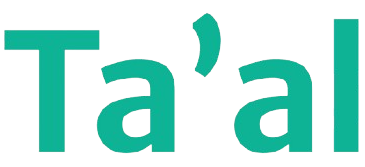The decision to become a freelancer or a full-time employee is a crucial one, and it can shape the course of your career. Both paths come with their own advantages and challenges. While some people thrive in the structure of a full-time job, others find the freedom and flexibility of freelancing more appealing.
Many individuals choose to explore freelancing through a freelance job agency, which can provide valuable support in finding clients and projects. In this blog, we’ll explore the differences between freelancing and full-time employment to help you make an informed decision about which option is right for you.
What is a Freelancer?
A freelancer is an independent worker who is not committed to a long-term employer. They usually work on a contract or project basis for multiple clients. Their services are on a temporary or short-term basis. Freelancers are self-employed and have the freedom to choose their clients, projects, and work schedules.
Some common freelance careers include web design, writing, graphic design, marketing, and consulting. Freelancers are responsible for managing their work, setting rates, finding clients, and handling taxes. They often have to juggle multiple projects simultaneously, but this can provide an exciting variety of work and the chance to work with different industries.
What is a Full-Time Employee?
A full-time employee works for a single employer and receives a regular salary or hourly wage in exchange for their services. Full-time employees are generally entitled to benefits such as health insurance, retirement plans, paid vacation, and other perks. They work fixed hours, typically 40 hours a week, and are expected to focus exclusively on the tasks assigned by their employer.
Full-time employees often have a more structured work environment and career progression path. Employers provide the resources needed to perform tasks, and employees are generally part of a larger team working toward company goals.
Key Differences Between Freelancing and Full-Time Employment

- Flexibility vs. Stability: One of the most significant differences between freelancers and flexible staffing solutions is the level of flexibility. Freelancers enjoy the freedom to choose when and where they work. It is perfect for those who prioritize work-life balance or have personal commitments. They can set their schedules, work from home, or travel while working.
However, this flexibility can come at the cost of stability. Freelancers do not have a guaranteed income, and their work may be inconsistent, especially in the beginning. They must constantly find new clients and maintain a steady workflow, which can be stressful.
Full-time employees have the security of a regular paycheck and job stability. They are typically given a set amount of paid time off and sick days, along with healthcare and other benefits, which can provide peace of mind. The trade-off is less control over their work schedule, as they must adhere to company hours and policies. - Income Potential: Freelancers have a way to earn more than full-time employees. It depends on the industry, skill set, and the number of clients they work with. Since freelancers set their own rates, they can often charge premium prices for specialized skills, which can lead to higher earnings.
That said, freelancers have to deal with periods of downtime when clients are scarce, and they may face challenges with pricing their services competitively. They also must pay self-employment taxes, which can be higher than the tax rate for salaried employees.
Full-time employees typically receive a fixed salary or hourly wage, which means their income is more predictable. However, their earning potential may be limited by company policies and salary scales. Full-time employees may receive raises, bonuses, or promotions based on performance, but their pay is generally consistent. - Work-Life Balance: Freelancers often have better control over their work-life balance since they can choose their own schedules. For instance, they may decide to work in the evenings or weekends when they have fewer personal commitments. Freelancers can also take breaks whenever they need and adjust their workload as necessary.
While this flexibility sounds appealing, it can sometimes result in overwork. Since freelancers are responsible for managing multiple clients, they may find themselves working longer hours to meet deadlines or take on new projects. As a result, work-life balance can sometimes become skewed if boundaries are not established.
Full-time employees have set work hours, which can help create a clear distinction between work and personal time. Employees often have weekends and public holidays off, which allows them to unwind and recharge. However, the structure of a 9-to-5 job may not always align with personal preferences, and some employees may find it difficult to balance work and personal life. - Job Security and Benefits: Full-time employees typically enjoy more job security than freelancers. They are protected by employment laws, and they have access to benefits like healthcare, paid vacation, retirement plans, and other perks. In case of illness, maternity leave, or personal emergencies, full-time employees usually have financial support from their employer.
A freelance job agency is responsible for its own healthcare, taxes, and retirement planning. They also face the risk of job insecurity if they lose a client or a project ends unexpectedly. Freelancers don’t receive paid time off or benefits like sick leave, so they must plan ahead and save money for times when work slows down. - Growth Opportunities: Full-time employees often have a clearer career progression. Companies provide training, mentorship, and opportunities for advancement. Employees may move up the corporate ladder or take on higher-level responsibilities as they gain experience.
Freelancers, while they can grow their business and expand their client base, may not always have the same opportunities for professional development. They must seek out their own learning opportunities and sometimes struggle to find mentors in a less structured work environment. However, freelancers can gain a diverse set of skills across different industries and develop a wide-ranging portfolio of work.
Which Option Is Right for You?
The decision between freelancing and full-time employment ultimately depends on your personality, career goals, and lifestyle preferences. If you value flexibility, independence, and earning more, freelancing may be the better option. However, it comes with the responsibility of managing your business, finding clients, and handling taxes.
If you prefer stability, job security, and the structure of a set work schedule, a full-time job might be the most appropriate choice. It provides consistent pay, benefits, and opportunities for career growth, but it may lack the freedom and autonomy that freelancing offers.
Conclusion

There is no one-size-fits-all answer when it comes to choosing between freelancing and full-time employment. Both paths offer unique advantages and challenges. Consider your priorities, long-term goals, and personal circumstances before making your decision. Whether you choose to work for a freelance job agency or as a full-time employee, remember that the key to success is finding a balance that aligns with your lifestyle and professional aspirations.Want to grow your freelance career permanently? Ta’al offers expert guidance and resources to help you succeed in the freelance world. Begin your earning journey today!




